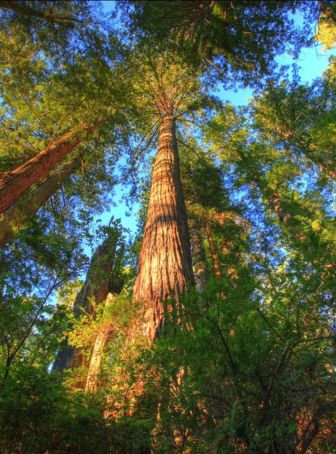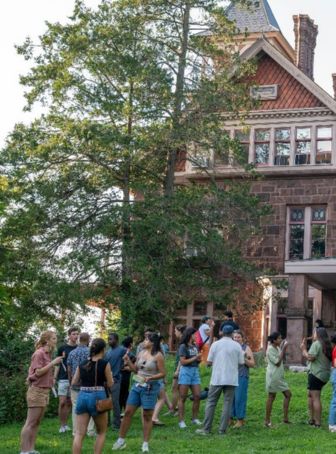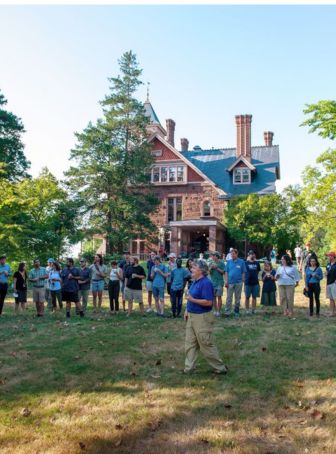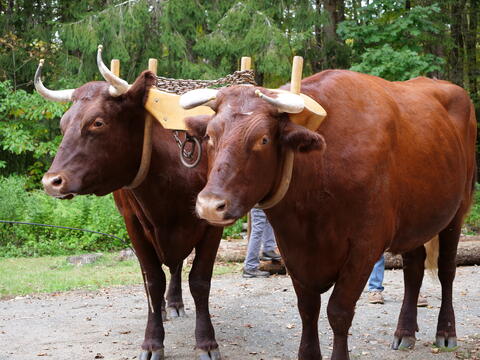
Eudora Miao, ’22 M.F.S., Program Associate at The Forests Dialogue
What happens when you put foresters, architects, developers, investors, industrial ecologists, and non-profit representatives together in a room? I have believed that fascinating sparks of thought are possible when people from different backgrounds and disciplines come together. On November 6th, 2020, a diverse group of leaders in their fields was convened virtually by the Hixon Center of Urban Ecology, the Yale School of Architecture, The Forest School at the Yale School of the Environment (YSE), and the Center for Industrial Ecology.
The center of attention? Mass timber, a family of wood products that are formed when pieces of wood are combined together to form larger, stronger panels or beam columns. In the building world, mass timber has gained more and more popularity as its benefits, from reduced environmental impacts to its strength, become clear. The conference “Future Cities’ Material Flows: Implications of Design, Production & Waste” was convened to discuss the potential of mass timber and its environmental implications. The conference saw participation and vibrant questions from over 200 participants, including professional foresters, architects, city planners, developers, researchers, and Yale University faculty, students, staff, and alumni.
This conference came at a critical time, commented Karen Seto, the Frederick C. Hixon Professor of Geography and Urbanization Science at YSE: “The world is rapidly urbanizing, and this will require significant resources to build the cities of tomorrow.” Seto’s opening remarks placed the conference in context, and raised the central question: “How do we build better and more sustainably?”
Could mass timber be part of the answer? While the production of cement and steel is very energy intensive, mass timber would serve as a net carbon sink, making urban buildings carbon negative. Forests represents 73% of the total opportunities of Natural Climate Solutions, and given the scale of change needed to address climate change, we need to tap into the timber and forest product market for solutions, explained Mark Wishnie, ‘01 M.F.S., Chief Sustainability Officer at BTG Pactual Timberland Investment Group.
Other than its carbon potential and environmental benefits, mass timber can also provide business benefits, as commented by some speakers. Jennifer Cover, President and CEO of the non-profit WoodWorks, highlighted the use of mass timber as a win-win for the construction industry and sustainability goals. The innovation and aesthetic appeal help the buildings attract leases faster and at higher lease rates; in addition, mass timber allows faster construction and fewer constraints from site and labor shortages. John Beauchamp, the Chief Investment Officer of Hixon Properties Incorporated, shared his perspective as a developer. In the process of constructing “Soto,” a mass timber building recently completed by Hixon Properties Incorporated in San Antonio, Texas, he routinely receives requests for visits to the site because of its distinct and beautiful appearance. Yet on the other hand, there are unusual challenges for developers who are going into mass timber construction, such as higher insurance costs, uncertain delivery of cross laminated timber (CLT), and uncertain city planner’s response.
Mass timber has proven itself to be the new favorite among architects and developers and has been a hot topic in the climate and carbon circle. But for us foresters, there is one big question still hanging in the air: “is there enough sustainably sourced timber to meet the growing demand for mass timber?” Clark Binkley, ‘79 Ph.D., Managing Director of International Forestry Investment Advisors, LLC, sought to provide some insights on that question. The fact that mass timber uses sawn lumber rather than standing timber provides more complexities. Mass timber, and specifically CLT, may add 10% increase in lumber demand over the next 15 years. And where could this additional lumber come from? Binkley highlighted a few sources, including improving the “lumber recovery factor (LRF)” in existing sawmills, improving plantation yields, excess sawtimber in the US South, and fire treatment on public lands in the US West.
The three hours of the virtual conference were filled with insightful discussions and excellent questions. While the conference ended, the discussion around mass timber continues. This gathering of folks with a common interest in mass timber was the first but certainly not the last event at Yale digging deeper into the topic. Colleagues of The Forest School, the Center for Industrial Ecology, and the School of Architecture have created a unique coalition across Yale to study the potential of biogenic building materials and the barriers that need to be overcome for its widespread adoption in urban areas. In the coming years, keep an eye out for more events from the School!
If you missed the conference, you can read the summary or view the conference recording on the Hixon Center Urban Conference website.
Photo copyright Jacobs School of Engineering, UC San Diego.







